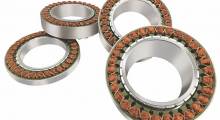Last week, CUREXO Corp. announced that its independently developed CUVIS-spine spinal surgery robot has received approval from the U.S. Food and Drug Administration. The Seoul, South Korea-based company noted that it is the third license it has acquired, in addition to Korean approval in 2019 and European CE certification last year.
CUREXO was founded in 2006 and acquired the assets of U.S.-based ISS in 2007. It claimed to have developed the “world’s first fully automatic surgical robot.”
In addition, the company said it took over the healthcare services sector of Hyundai Heavy Industries Co. as part of its efforts to build up its research and development, hire the best researchers in South Korea, and manufacture leading medical robots. CUREXO is also a shareholder in Fremont, Calif.-based THINK Surgical Inc., which has developed orthopedic surgical robots.
CUVIS-spine designed for speed, safety
CUREXO said its CUVIS-spine system guides the insertion of a pedicle screw according to the surgical plan. It uses a high-precision robot arm and Wireless One-Step navigation based on a real-time optical torque sensor (OTS). This robot enables more precise, safer, and faster surgery in comparison with traditional manual surgery, said the company.
In addition, robotic surgery can minimize the filming and reduce the radiation exposure of both patients and medical staff, CUREXO said.
Both two-dimensional filming (C-arm) and 3-dimensional filming (O-arm) are applicable with this system, providing expandability, according to the company. With the Wireless One-Step, CUVIS-spine allows multiple steps of traditional surgery —needle, K-wire, dilation, and tapping—to be performed with one tool, significantly reducing surgery duration, claimed CUREXO.
Robots allow for minimally invasive surgery, which can reduce patient times in comparison with manual surgery.
CUREXO expands focus
Severance Hospital in South Korea is already using two CUVIS-spine units, and one has been exported to an Australian medical facility company, said CUREXO. The company said it now plans to expand its focus on global markets including the U.S. and Europe now that it has FDA approval.
The global market for surgical robots will experience a compound annual growth rate (CAGR) of 11.52% between 2020 and 2027, growing from an estimated $5.46 billion in 2020 to $14.8 billion in 2027, predicts Research and Markets. Similarly, Markets and Markets forecasts a CAGR of 17.6% as the market grows from $6.4 billion in 2021 to $14.4 billion in 2026. It noted that North America is the largest part of that market.
“Now we can sell our solution in all countries, including the U.S. which is the biggest medical market,” stated Jae-Joon Lee, CEO of CUREXO. “CUREXO plans to focus on our medical robots sales, including CUVIS-joint, CUVIS-spine, and Morning Walk to not only the Korean market, but also to advanced medical markets such as the U.S. and Europe.”
Article topics
Email Sign Up














